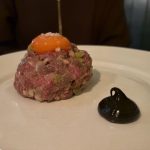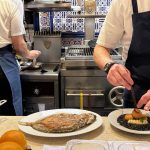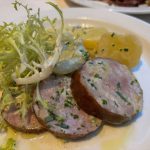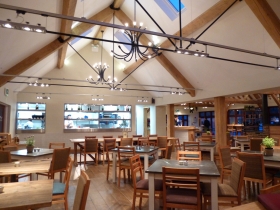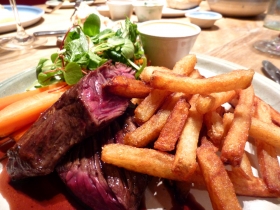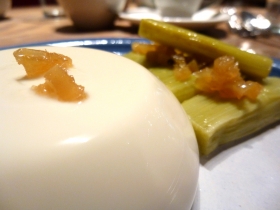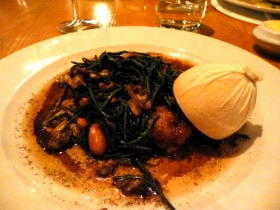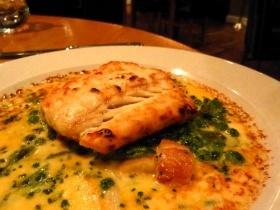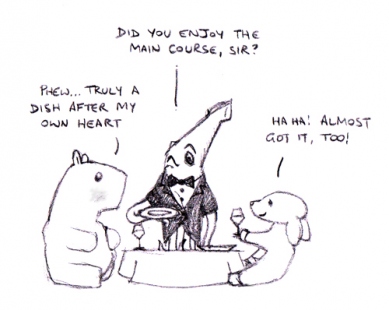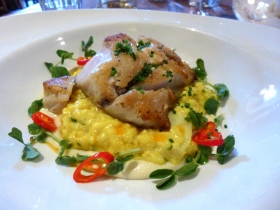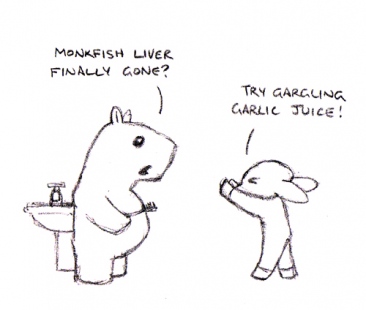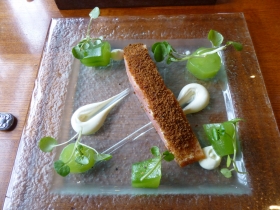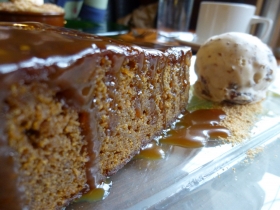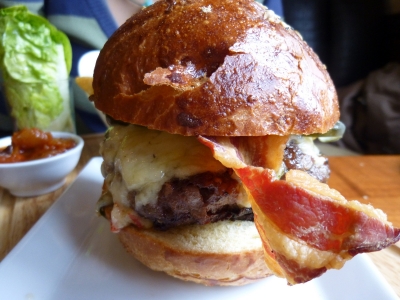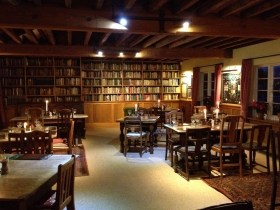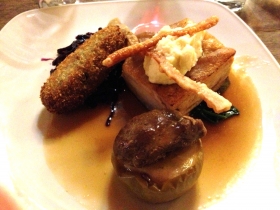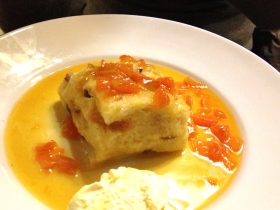The Ludlow Kitchen wins at local produce, don’t even try to compete. This is because it is the new restaurant attached to the successful Ludlow Food Centre, farm shop extraordinaire. Let’s see… the beef, lamb and pork is all from their own farm and butchered on the premises, they also make their own cheeses, cream and butter on the premises from their own milk, many of the vegetables are grown in their own gardens, jams and preserves made on the premises from local fruit, honey from their own hives. Heck, they roast their own coffee. It helps that their “farm” is actually the Earl of Plymouth’s rather extensive estates. Don’t ask me why the Earl of Plymouth’s estates are in Shropshire.
So how’s the new restaurant? It’s a big barn of a room, filled with bare wood – furniture, beams, fittings – but with a strongly contemporary look. This is a bright space, and the service was also bright and friendly. Well, they’ve only been open a week so they ought to be enthusiastic.
The starters on offer were all vegetarian, except for the chicken liver parfait. I went for a salad of beetroot and Ludlow Blue cheese. The mix of three beetroots was good, sweet flavours and some crunch from raw slices of golden beet, but the piece of cheese used was a bit of a dry old specimen, more veining than paste. Maureen’s pickled mushroom salad was great; a selection of lightly pickled fungi with a salad of mixed herbs including plenty of tarragon – great idea, the aniseed flavour sang with the pickle.
I went for the onglet steak, and it was a delicious piece of meat, absolutely stuffed with flavour, aided and abetted by pan juices. Good carrots, more herb salad, and some pretty decent chips; thin, crunchy, still with skins on, they took to the pan juices very well. The accompanying bearnaise sauce was a perfect consistency, but sadly over-vinegared.
Maureen’s main was a couple of melting trout fillets with a light sauce of ramsons and lightly roasted baby onions. Onions with trout? But they were young and sweet, and along with the delicate fish and loving wild garlic the whole dish was a paean to Spring. Which I’m sure is just around the corner.
Puddings were 50/50. Almond pannacotta was brilliant, and a perfect consistency – wobbly to the point of but not quite collapsing. Why haven’t I had almond pannacotta before? Why? Roasted green rhubarb and ginger accompanied it very smartly. Maureen’s rice pudding was a good flavour, sweet and gently spiced, but it was a huge portion. The rice still had plenty of bite, like a risotto. Surely a rice pudding should be soothingly soft? My espresso at the end was very bitter, I ought to have said something.
This is only the Ludlow Kitchen’s first week, and overall I was pleased. The odd tweaks needed are just that, and shouldn’t hide some very honest and flattering cooking of excellent local produce. The starters felt pricey, and three courses ended up at about £26 before drinks. So, not a bargain, but that isn’t going to stop me returning, or indeed bringing friends here when I want to showcase to them the fine local foods that makes this region brilliant.


